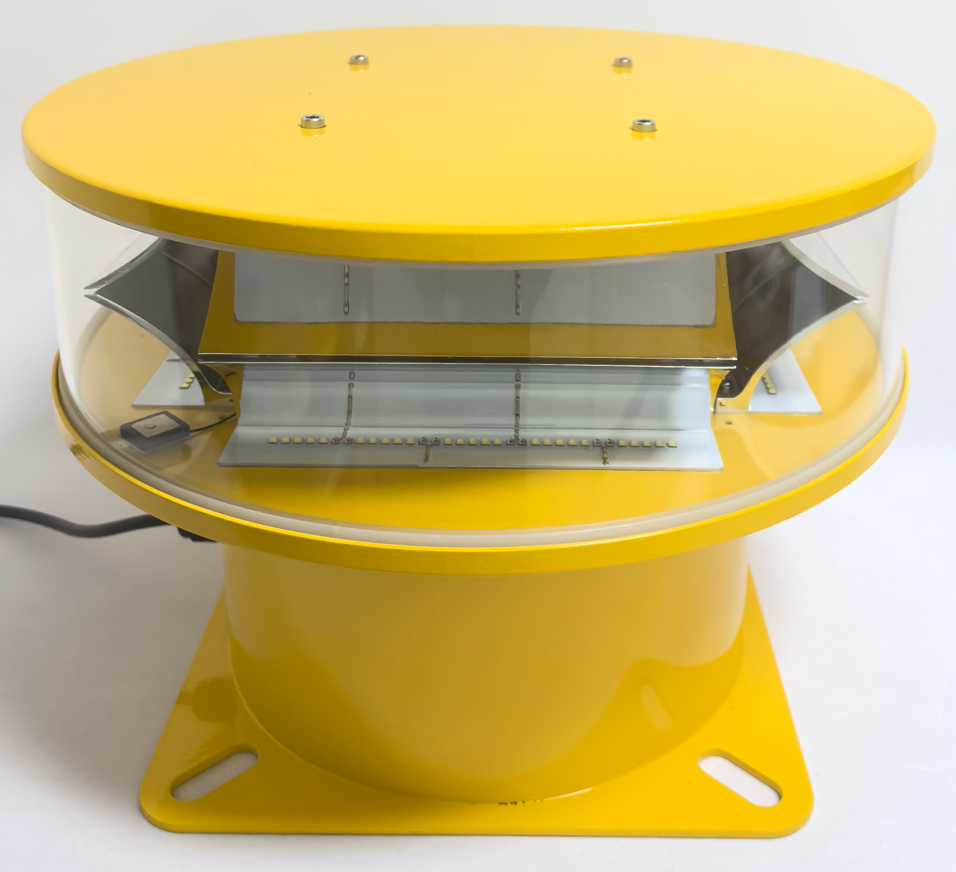How Obstruction Light Aviation Technology Enhances Airspace Safety
The rapid growth of urban infrastructure and renewable energy projects has led to an increase in tall structures such as skyscrapers, wind turbines, and communication towers. These obstructions pose significant risks to aircraft, especially during low-visibility conditions. Obstruction light aviation systems play a crucial role in mitigating these risks by providing clear visual warnings to pilots. This article examines the importance, types, and technological advancements in obstruction light aviation solutions that ensure safer skies.
The Critical Role of Obstruction Lights in Aviation
Obstruction light aviation systems are designed to mark tall structures, making them visible to pilots both day and night. These lights help prevent collisions, ensuring compliance with international aviation regulations set by the FAA and ICAO.
Why Are They Essential?
Prevent Mid-Air Collisions: Unmarked structures can be deadly hazards for low-flying aircraft.
Regulatory Compliance: Aviation authorities mandate obstruction lighting for structures exceeding certain heights.
Enhanced Navigation: Pilots rely on these lights to identify obstacles, especially in poor weather.
Types of Obstruction Lights in Aviation
Different structures require varying intensities and colors of obstruction lights based on their height and location.

1. Low-Intensity Obstruction Lights (L-810)
Used for structures under 200 feet.
Steady-burning red lights.
Common on small buildings and utility poles.
| obstruction light aviation |
2. Medium-Intensity Obstruction Lights (L-864 & L-865)
For structures between 200-500 feet.
L-864 emits steady red light, while L-865 produces flashing white light during daytime.
Ideal for telecom towers and wind farms.
3. High-Intensity Obstruction Lights (L-856 & L-857)
For structures taller than 500 feet.
Bright white strobes visible for miles.
| obstruction lighst aviation |
Used on skyscrapers and large transmission towers.
Key Features of Modern Obstruction Light Aviation Systems
Advancements in lighting technology have improved the efficiency and reliability of obstruction lights.
1. LED Technology
Energy-efficient and long-lasting.
Brighter illumination with lower power consumption.
2. Dual-Lighting Systems
Automatically switch between red (night) and white (day) for optimal visibility.
3. Solar-Powered Solutions
Ideal for remote locations without grid access.
Reduces operational costs and environmental impact.
4. Smart Monitoring & IoT Integration
Remote diagnostics for real-time fault detection.
Automated alerts for maintenance needs.
Applications of Obstruction Light Aviation Systems
1. Wind Turbines
Tall wind farms require medium to high-intensity lights to avoid aircraft collisions.
2. Telecommunication Towers
Critical for towers in both urban and rural areas.
3. Skyscrapers & High-Rise Buildings
Major cities mandate obstruction lighting on tall buildings near airports.
4. Cranes & Temporary Structures
Construction sites near flight paths must use temporary obstruction lights.
Regulatory Standards for Obstruction Lighting
Different regions follow strict guidelines to ensure uniformity in aviation safety.
FAA (USA) Standards
AC 150/5345-43J specifies light intensity, color, and flash rates.
ICAO (International) Standards
Annex 14 provides global guidelines for obstruction lighting.
EASA (Europe) Standards
Similar to FAA but with minor variations in light classifications.
Future Trends in Obstruction Light Aviation
The industry is evolving with new technologies to enhance safety and efficiency.
1. Adaptive Lighting Systems
Adjust brightness based on weather conditions.
2. Drone-Based Inspections
Automated drones can monitor and maintain obstruction lights.
3. AI-Powered Predictive Maintenance
Machine learning predicts failures before they occur.
Obstruction light aviation technology is a cornerstone of modern airspace safety, preventing accidents and ensuring compliance with global aviation regulations. With advancements in LED, solar power, and smart monitoring, these systems are becoming more efficient and reliable. As infrastructure continues to grow, the role of obstruction lighting will only become more critical in safeguarding both manned and unmanned aircraft.
